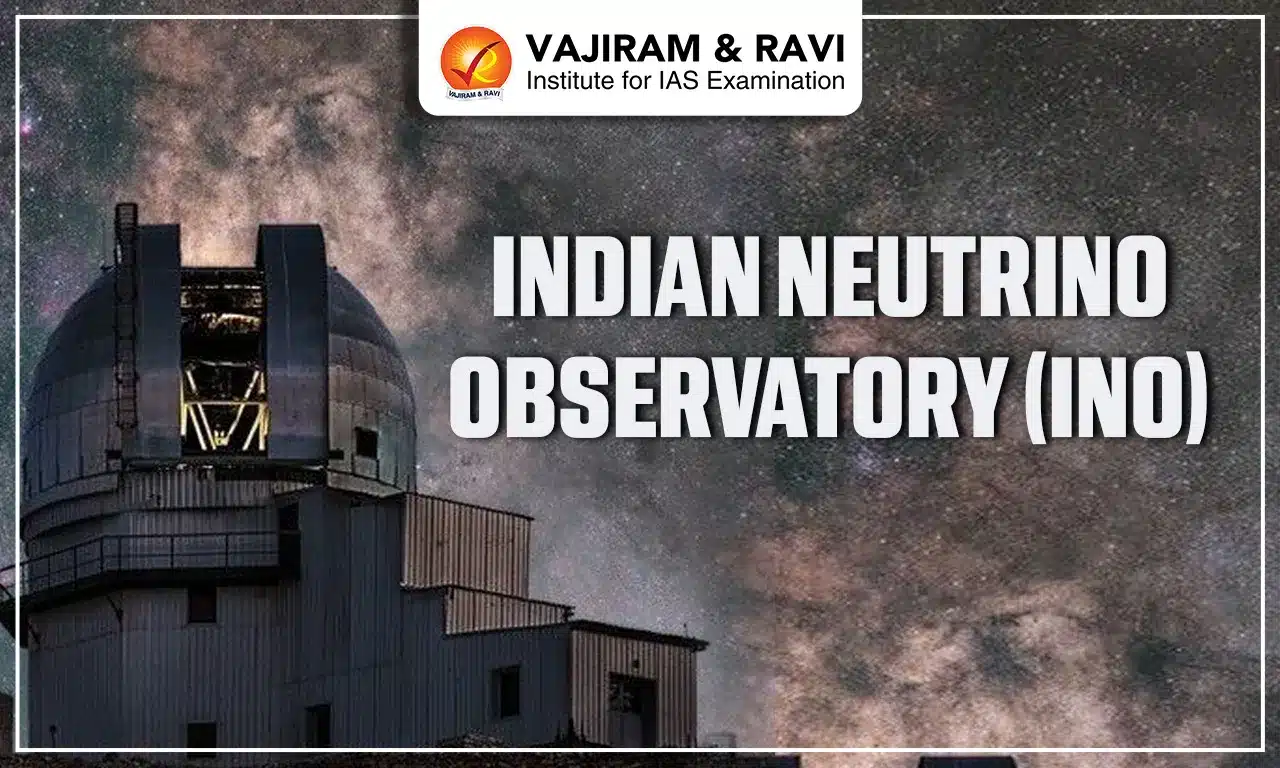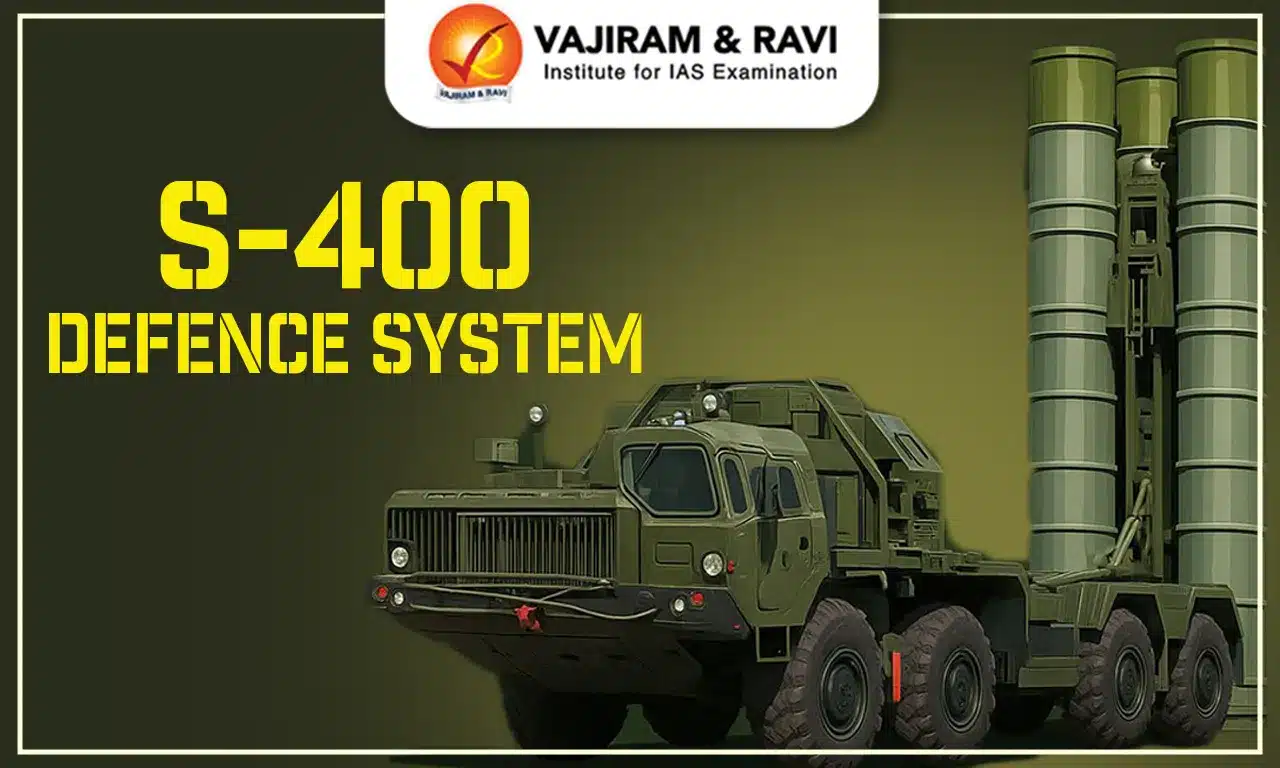The Indian Neutrino Observatory (INO) is an initiative to create a state of the art underground laboratory to research fundamental scientific concepts. The mega-science project is to be jointly funded by the Department of Atomic Energy and the Department of Science and Technology. The INO Project is one of its kind in India due to the extensive collaboration of nearly 100 scientists and 26 institutes, of which Tata Institute of Fundamental Research, Mumbai, is the hosting institution.
The primary objective of the INO Project is to study neutrinos, one of the most abundant fundamental particles, coming from various sources and using an underground Iron calorimeter (ICAL) detector.
What are the Neutrinos?
A neutrino is one of the fundamental particles, which means it isn’t made of any known smaller particles.
- Properties: It is a Lepton and thus belongs to the same family as the electron, the most well-known fundamental particle.
- Of all the subatomic particles that have mass, neutrinos are the lightest.
- Unlike electrons, they are electrically neutral.
- They interact with matter through the weak force. The property that matter is almost transparent to neutrinos is a result of this force's weakness.
- Different species of neutrinos mix and oscillate into one another, in weak interactions, as they traverse through the cosmos.
- Sources: They are also the most prevalent massive particle in the universe, which makes them very common. They are produced both in fusion (as in Star) and decay (as in Reactor).
- Neutrinos are produced by the Sun and other stars through nuclear fusion and decay processes in their core.
- When heavy particles undergo a process known as "decay," they frequently produce neutrinos, which come from a variety of different sources.
- Other sources include exploding stars, relic neutrinos, natural radioactivity, and cosmic ray interactions.
Need of INO
The INO project broadly aims to create an outstanding underground laboratory in India for non-accelerator-based high energy and nuclear physics research.
- To study the physics of the little-understood particles: Neutrino detectors around the world seem to see evidence that these weakly interacting particles are not really massless, as was thought so far.
- This has a significant impact on a variety of fields, including nuclear and particle physics, astrophysics, and cosmology.
- To detect masses of individual neutrino types: Neutrinos are the most numerous particles in the universe (other than photons), and even a small mass can impact the universe's evolution through their gravitational effects, making it crucial to understand the size of the three individual neutrino types.
- To study the evolution of the universe: Recent astrophysical measurements offer insights into the universe’s evolution, but it is crucial to explore neutrinos’ masses and properties directly for complementary information.
- To study the core of the Earth: Neutrinos can be utilised in neutrino tomography, a detailed investigation of Earth's structure from the core, as they are the only particles capable of probing the deep interiors of the Earth.
- Recapturing India’s pioneering studies on neutrinos: The planned Indian Neutrino Observatory is an attempt to recapture the pioneering studies on neutrinos at Kolar Gold Field (KGF), which detected the first atmospheric neutrinos in 1965. The closure of the mines forced the closure of this laboratory.
Importance of the Location of INO
The INO collaboration has decided on a site in the Bodi West Hills (BWH) region near Pottipuram village in Theni district of Tamil Nadu (110 km from the temple town of Madurai).
- Why underground?
- Because of their incredibly weak interaction with matter, neutrinos are very hard to detect in a laboratory.
- The background from cosmic rays and natural radioactivity will make it almost impossible to detect them on the surface of the Earth.
- The overburden provided by Earth matter is transparent to neutrinos, whereas cosmic rays are substantially reduced depending on the depth at which the detector is located.
- This is the reason most neutrino observatories are located deep inside the Earth's surface.
- Bodi Hills has been selected as the location because the Western Ghats' steep slopes offer ideal and stable rock conditions for creating a sizable underground cavern for long-term use.
- Close to the equator: Placing a neutrino detector close to the equator at an underground neutrino facility will help study solar neutrinos and their oscillations.
Iron Calorimeter Detector (ICAL)
The detector installed in the INO laboratory will be a magnetised iron calorimeter detector (ICAL).This non-moving static device will study the sky using neutrinos, much like a telescope studies the sky using visible light.
- Charged particles produced in the rare interactions of neutrinos with the iron (constituting the 50 kton, 1.3 Tesla magnet) will be detected in glass based detectors called RPCs sandwiched between successive iron layers.
What can the ICAL tell us about Neutrinos?
It appears from data gathered globally, particularly from the Super-Kamiokande and SNO experiments, that various neutrino flavours mix and oscillate into one another. But, all of these detectors have so far only detected a reduction in the expected spectrum.
- Trough and peak effect: The "trough and peak" effect can be established by studying the muon spectra from atmospheric neutrinos, which will allow ICAL to accurately determine the oscillation parameters.
- Earth-matter effects: Additionally, since ICAL can distinguish between neutrino and anti-neutrino events, it can also investigate the effects of Earth-matter. It will be able to study some unknown oscillation parameters as well.
- Address the “neutrino-mass hierarchy”: The "neutrino-mass hierarchy," which is not currently well understood, is something that the INO team hopes to address using the detector.
- Can be used as the far-detector: The INO detector can also be used as the far detector of a long-baseline neutrino experiment, using a neutrino beam from a neutrino factory in Japan, Europe, or the USA.
| Global Neutrino Observatories | Location |
| Sadbury | Canada |
| Super Kamiokande | Japan |
| Gran Sasso Mountains | Italy |
| Soudan mines | USA |
| KATRIN experiment | Germany |
| Daya Bay Reactor Neutrino Experiment | Honk Kong |
| IceCube Neutrino Observatory | Amundsen–Scott South Pole Station in Antarctica |
Significance of INO Project
Despite being opposed by many ecologists and activists, the INO project is significant for India in many ways such as:
- INO is anticipated to eventually grow into a premier underground science facility, spanning numerous disciplines like physics, biology, geology, and related engineering fields - a true Science and Technology Institution in India, in essence.
- Along with the LIGO India project, it is a dream project of Indian physicists.
- INO will contribute to other high-energy and nuclear physics projects worldwide.
- Students from science programmes across India will have the chance to take part in the creation of sophisticated particle detectors and electronic data-acquisition systems.
- Modern technologies are used in the design and development of INO. This would result in a generation that would strengthen the country's technological foundation.
- The detectors used in INO are also used in industries like medical imaging.
Current Status of INO Project
The proposed Indian Neutrino Observatory (INO) has been clouded by uncertainty since its very inception.
- The INO project was conceived in 2005, a site under the Bodi West Hills in Tamil Nadu’s Theni district was identified by 2009 and a Rs 1,500 crore fund was proposed by 2015.
- In 2018, the environment ministry finally granted the Indian Neutrino Observatory (INO) the necessary approval.
- Opposition to the Project:
- According to environmental experts, the project site is within a tiger corridor and poses a threat to its fragmentation.
- Experts have also cited that construction activities like extensive blasting, excavation, tunneling, and transportation, etc. would impact local ecology as well as the local rock-system.
- The radiation-related myths due to neutrinos have also been used as an argument against the project.
- As of today, due to opposition from ecologists and the state government, the INO project's construction has not started yet.
Last updated on December, 2025
→ Check out the latest UPSC Syllabus 2026 here.
→ Join Vajiram & Ravi’s Interview Guidance Programme for expert help to crack your final UPSC stage.
→ UPSC Mains Result 2025 is now out.
→ UPSC Notification 2026 is scheduled to be released on January 14, 2026.
→ UPSC Calendar 2026 is released on 15th May, 2025.
→ The UPSC Vacancy 2025 were released 1129, out of which 979 were for UPSC CSE and remaining 150 are for UPSC IFoS.
→ UPSC Prelims 2026 will be conducted on 24th May, 2026 & UPSC Mains 2026 will be conducted on 21st August 2026.
→ The UPSC Selection Process is of 3 stages-Prelims, Mains and Interview.
→ UPSC Result 2024 is released with latest UPSC Marksheet 2024. Check Now!
→ UPSC Prelims Result 2025 is out now for the CSE held on 25 May 2025.
→ UPSC Toppers List 2024 is released now. Shakti Dubey is UPSC AIR 1 2024 Topper.
→ UPSC Prelims Question Paper 2025 and Unofficial Prelims Answer Key 2025 are available now.
→ UPSC Mains Question Paper 2025 is out for Essay, GS 1, 2, 3 & GS 4.
→ UPSC Mains Indian Language Question Paper 2025 is now out.
→ UPSC Mains Optional Question Paper 2025 is now out.
→ Also check Best IAS Coaching in Delhi
Indian Neutrino Observatory FAQs
Q1. In which state is the Indian Neutrino Observatory (INO) being established?+
Q2. Under the aegis of which departments will the INO Project function?+
Q3. What is the purpose of the Indian Neutrino Observatory (INO)?+
Q4. What is the detector being established at the Indian Neutrino Observatory (INO)?+
Q5. Why is the Indian Neutrino Observatory (INO) opposed?+




















